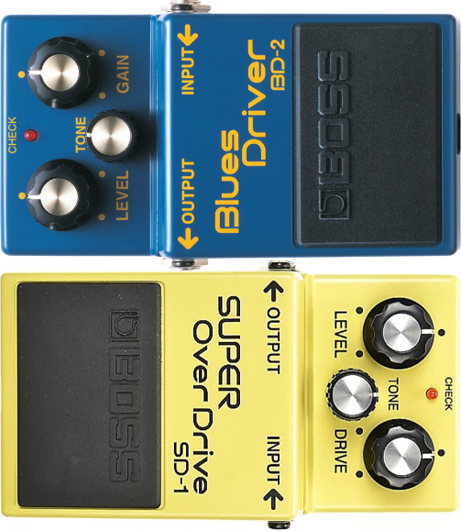Howdy, Stranger!
It looks like you're new here. If you want to get involved, click one of these buttons!
Categories
- 241.3K All Categories
- 22 >> Start Here <<
- 12 New Members
- 8 FAQs
- 86.6K Gear
- 39.5K Guitar
- 3.4K Acoustics
- 1.3K Bass
- 14.6K Amps
- 17.2K FX
- 265 Digital & Modelling
- 765 Other Instruments
- 8.3K Making & Modding
- 420 Gear Reviews
- 107 Guitar Reviews
- 73 Amp Reviews
- 118 FX Reviews
- 87 Other Reviews
- 748 Made in the UK
- 972 Theory
- 1.8K Technique
- 2.1K Live
- 3.2K Studio & Recording
- 2.1K Making Music
- 218 Events
- 15 Guitar Show 2018
- 829 Plug My Stuff
- 105K Classifieds
- 41K Guitars £
- 2.8K Acoustics £
- 138 LH Guitars £
- 895 Basses £
- 10.5K Parts £
- 18.3K Amps £
- 34K FX £
- 2.8K Studio & Rec £
- 6.1K Misc £
- 465 Personnel
- 54.7K Chat
- 36.5K Off Topic
- 1.1K Tributes
- 6.6K Music
In this Discussion
Become a Subscriber!
Subscribe to our Patreon, and get image uploads with no ads on the site!
Circle of fifths clock
Roland said: Scales are primarily a tool for categorising knowledge, not a rule for what can or cannot be played.
Supportact said: [my style is] probably more an accumulation of limitations and bad habits than a 'style'.
Supportact said: [my style is] probably more an accumulation of limitations and bad habits than a 'style'.
0 LOL 0
LOL 0 Wow! 0
Wow! 0 Wisdom
Wisdom
 LOL 0
LOL 0 Wow! 0
Wow! 0 Wisdom
Wisdom Base theme by DesignModo & ported to Powered by Vanilla by Chris Ireland, modified by the "theFB" team.



Comments
https://i.imgur.com/6PzEaz4.jpg
Supportact said: [my style is] probably more an accumulation of limitations and bad habits than a 'style'.
Personally, I don't get why people don't add a second cycle around the outside offset by a minor or major third - so you can generate all the diatonic chords for a key or add the modes as an arc ...
what they could do is reflect one hemisphere of the keys - jobs a goodun
Supportact said: [my style is] probably more an accumulation of limitations and bad habits than a 'style'.
https://i.imgur.com/MsZBv1G.jpg
Supportact said: [my style is] probably more an accumulation of limitations and bad habits than a 'style'.
I've also shown the key signatiures for relative keys all follow on from each other like a long drawn out scream.... aaaaaghhhh
also the outer circle notes can be added to the modes to give the melodic minor modes but I don't know them too good so I don't make jokes about that.
On the standard one like my black one, the 6 keys in a single region (C, F and G, and Am, Dm and Em) are the diatonic chords for C major.
Supportact said: [my style is] probably more an accumulation of limitations and bad habits than a 'style'.
The reason for two concentric cycles of fourths is I can spell the notes in any major or minor chord. Also I draw a cycle of fifths by sticking my tongue out a little cos I'm being serious and concentratin' and drawing a compass to the CAFE, the rest I fill in from memory...
Also C ionian + Eb is melodic minor and the other modes follow suit, C lydian (G) + Bb is c Simpsons major.
I'm not saying knowing any of this will make you a better person, but Larry Carlton does a whole alternating major and minor thirds modulation thing and this provides a way of quickly generating it without going cross eyed..
Karate taught me about 25 different ways to turn around... not in one go, and not explicitly but they're their now, moving about the kitchen, staggering to the pub loos, playing football and sparring... I also can see it in other people ... like Elvis he exaggerates it a little but its obvious from his moves
It's just another way of looking at stuff, if you knew it already - what have ya lost? If ya didn't know all of that - win.. if you see something else staring out of the bushes - even better
It also helps match notation to strings a little bit
I’m genuinely interested and trying to understand.
Supportact said: [my style is] probably more an accumulation of limitations and bad habits than a 'style'.
Key of F has the same notes as C mixolydian - just a different starting point. Bb major has the same notes as C dorian same caveat.
I used to draw the chords as connecting lines inside the cycle of fifths - hoping to see some patterns that'd tip me off to harmonic extensions or inversions but this seems to work a little better... for extensions at least - if I play the next couple of notes swerving in and out of the cycles as before I get the 9th, 11th, 13th notes - and if I've a bass player I can play B minor over a G bass and it might sound like a Gmaj add 9 .. perhaps
Supportact said: [my style is] probably more an accumulation of limitations and bad habits than a 'style'.
Your way sounds instantly applicable to fast chord changes and I am currently shifting all that modal baggage around from change to change, I could preempt changes and bridge changes far better ..